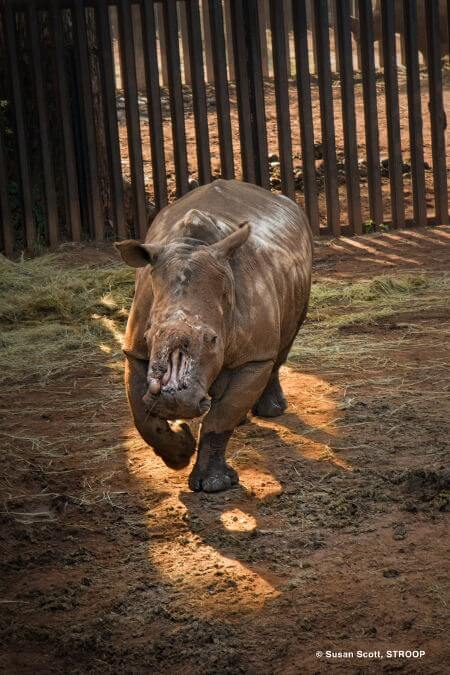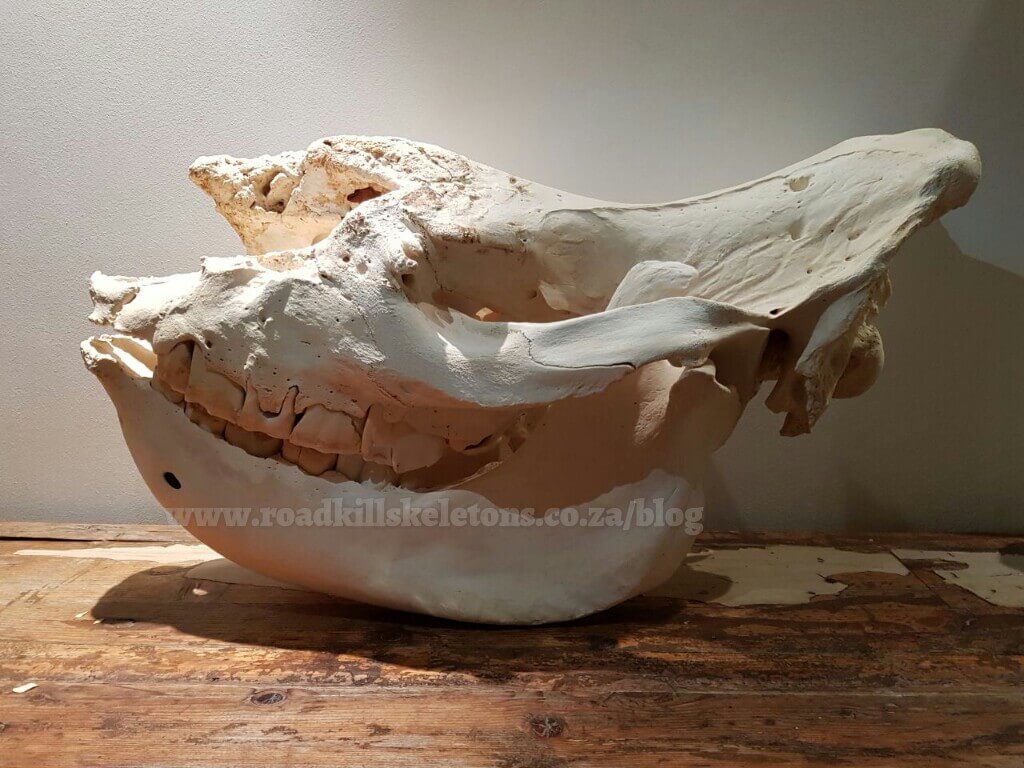With half her face literally hacked off after the initial attack, the calf wandered in the bush for days. One cannot imagine the pain the animal had to endure. And perhaps we should. One could liken it to waking up in the morning after a deep sleep to find your nose completely removed. Not only removed, no, scooped out of your face to the extent that the sinus cavities are clearly visible. Now imagine wandering around in this pain, not for hours, but days. The thought is simply too ghastly to contemplate.
But this is what happened to a 6-year old rhino calf. For what? For some part of the human race that somehow attach miraculous powers to the horn of this majestic beast. Why is it that cultural belief systems earn such a cushy, safe hideaway spot in our everyday existence that we allow events like this to earn a lesser ranking than rape or murder? Indeed, when considering this atrocity, I yearn for a time in our future existence where rational thinking will unashamedly remove and discard supernatural belief systems to the rubbish bin where it belongs. We simply cannot afford to ignore the fact that untested superstitions and dogma do not belong in a progressive society and certainly will not contribute to our future well-being. In fact, it might very well be our downfall.
Hope was living on a wildlife reserve called Lombardini in the Eastern Cape. She fell victim to poachers who darted her with tranquilisers and then proceeded to hack off her horns. After the poachers left her for dead Hope miraculously survived the ordeal, displaying a fighting spirit that made international headlines.

*Image courtesy of Susan Scott, STROOP
In what was regarded as a medical first, veterinarians Jana Pretorius and Johan Marais of Saving the Survivors, used specialised techniques to close the gaping wound left by the poachers. Johan Marais, founder of STS, stated that a unique medical procedure was used on the rhino. A specialised medical device was applied using a crank and pulley system to draw the two sides of the wound together, thereby stretching the skin over the wound. Metal screws were bolted into what remained of Hope’s nasal bone to facilitate fixing a thin metal shield backed by fiberglass over the wound. During Hope’s short life, this would be one of many operations.


*Images courtesy of Susan Scott, STROOP
With numerous operations that followed to close the cavity exposing her sinuses, and against all odds the animal eventually started showing signs of recovery. Surviving against all odds, her recovery was deemed miraculous and the calf was soon dubbed “Hope”. A television documentary called “STROOP”, the Afikaans for “poaching” was produced by wildlife television presenter Bonné de Bod, along with cinematographer Susan Scott. With a keen display of the courage of a true fighter, Hope swiftly rose to fame and became the poster icon in the fight against rhino poaching.


*Images courtesy of Susan Scott, STROOP
Hope’s death caused an uproar on social media with animal lovers and activist groups expressing their grief. STS wrote‚ “It is with heavy hearts and great sadness that Saving The Survivors has to share the devastating news that our beloved White rhino cow‚ Hope‚ is no longer with us. She was found yesterday late afternoon without life in her boma where she has been cared for since March this year.” They continued, “There will always be Hope‚ for this iconic rhino will live on in everyone’s hearts and in Saving The Survivors’s mission of Creating Hope from Hurt.”
[In a twist of events, the owner of the Lombardini Game reserve, Johan Lottering donated Hope’s skull to Roadkill Skeletons. In a bid to raise awareness in the struggle against rhino poaching, RKS plans promote the legacy of Hope by exhibiting her skull at Butterfly World Zoo. BFW and RKS are currently in communication with different NGO’s to explore possibilities of future fund-raising efforts involving Hope the Rhino.]


